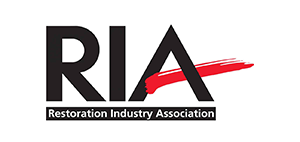Did you know that wet drywall can sag? This can cause bolts and screws to loosen. It’s key to understand how water damage affects ceiling drywall. Whether it’s a small leak or a big flood, fixing water damage is vital for your home’s safety.
Mold is not just a health risk. It also weakens your home’s structure. So, acting fast is very important.
Key Takeaways
- Soft and mushy drywall means it’s badly damaged and needs to be replaced.
- Stains and color changes on ceiling drywall mean it’s time for a new one.
- Fixing water damage quickly stops mold and keeps drywall strong.
- Finding where the water came from is key to avoiding more problems.
- Replacing drywall costs $300-$400 for tools and materials, not including labor.
- Mold on the ceiling is dangerous and needs the drywall replaced right away.
- Experts in moisture and remediation can fix your home like new.
Signs of Water Damage on Ceiling Drywall
It’s key to spot water damage on ceiling drywall early. This can stop bigger problems and save money on repairs.
Look out for discoloration as a sign. Stains can be off-white, yellow, rusty brown, or black. They show water has been there for a while. Also, round stains or high-water marks on ceilings mean water is present.
Physical changes are another clue. If paint peels, popcorn texture falls off, or drywall sags or bulges, it’s a moisture issue. These problems can weaken the drywall and might need it replaced.
Cracks in the ceiling can also indicate water damage. These cracks happen when drywall absorbs water and shifts or separates.
Mold growth is a serious sign. Mold, which loves damp places, can be green, gray, or black. It’s harmful to health. If you see mold, get a pro to check it out.
- Visible stains: off-white, yellow, rusty brown, black spots
- Physical changes: peeling paint, bubbling, sagging or bulging drywall
- Cracks from water absorption
- Mold growth: green, gray, black
- Sagging indicates loss of structural integrity
Experts say to act fast on water damage. They offer detailed checks and promise their work will last.
At times, finding the water damage source is hard. It’s wise to get a pro’s help, especially if you don’t know where the water came from. This is true for damage that’s been going on for a long time or if wet joists are involved.
Experts can tell if the drywall can be dried or if it needs to be replaced. They say replacing damaged drywall is crucial for safety and looks.
Do you have to replace ceiling drywall if it gets wet?
When ceiling drywall gets wet, you might need to replace it. This depends on how much damage there is and where the water came from. Water stains and spots are clear signs of water getting in.
Visible water damage means the drywall must be replaced. This keeps your home safe and prevents more problems.
Here are some signs you need to replace the drywall:
- Water stains: Off-white, yellow, rusty brown, or black spots on the ceiling mean water damage.
- Sagging drywall: If the drywall starts to sag, it’s lost its shape due to water.
- Peeling or bubbling paint: This shows water has gotten into the drywall.
- Mold growth: Green, gray, or black mold is a serious sign of water damage and health risks.
- Cracks in the ceiling: These can happen when water makes the drywall expand and contract.
The cost to replace wet ceiling drywall can change a lot. It depends on how much damage there is and where it is. If the damage is small, you might only need to replace a part of the ceiling.
But, if the water is dirty, like from a flood, you must replace it right away. Dirty water can be very harmful.
It’s smart to get a professional to check the damage. They can tell if you need to replace the drywall or if it can be fixed. They also help find where the water is coming from and stop it. Plus, they can help with insurance claims.
Act fast. Drying wet drywall quickly can save it. But, stopping the water source first is the most important thing. Getting help from water damage repair services is key. They work 24/7 to fix the problem fast.
How to Fix Wet Ceiling Drywall
Fixing wet ceiling drywall starts with finding the leak’s source. Leaks can come from overflowing sinks, faulty water lines, clogged gutters, or roof damage. Use a moisture meter or tissue paper to find the leak.
When water pools in light fixtures, turn off the power first. Good ventilation in kitchens, bathrooms, and laundry rooms helps prevent damage. Use exhaust fans or dehumidifiers to reduce moisture.
If you can’t find the leak, try cutting small holes in the ceiling. For roof leaks, check shingles, chimneys, and vents. Use a hose to simulate rain and check the attic for leaks.
Once you’ve found and fixed the leak, dry out the wet drywall. Use air movers and dehumidifiers to dry it. It usually takes 3-5 days, and a moisture meter will show when it’s dry.
If drywall is wet for over 48 hours, mold might grow. Replace it if you see water stains, discoloration, or softening. Make flood cuts or weep holes to help dry it faster.
Know the type of water damage you’re dealing with. Clean water from a burst pipe you can handle yourself. But, if it’s contaminated, get a pro. These steps will help you fix wet ceiling drywall and protect your home.
Conclusion
Fixing water damage in ceiling drywall is key to keeping your home safe and looking good. It’s important to get a pro to check how bad the damage is. This ensures the repair is done right.
Signs like watermarks, texture changes, and sagging mean you need to fix your ceiling. First, turn off the water and use moisture meters to see how bad it is.
Keeping your home in check, like checking the roof and plumbing, can stop leaks. Also, good air flow helps avoid mold and leaks. If you do get water damage, act fast to dry out the area in 48 hours.
Getting help from experts is smart. They know how to remove water, dry things out, fix mold, and replace drywall. This saves money and keeps your home safe. By fixing problems early and taking care of your home, you make it healthier for everyone living there.

























